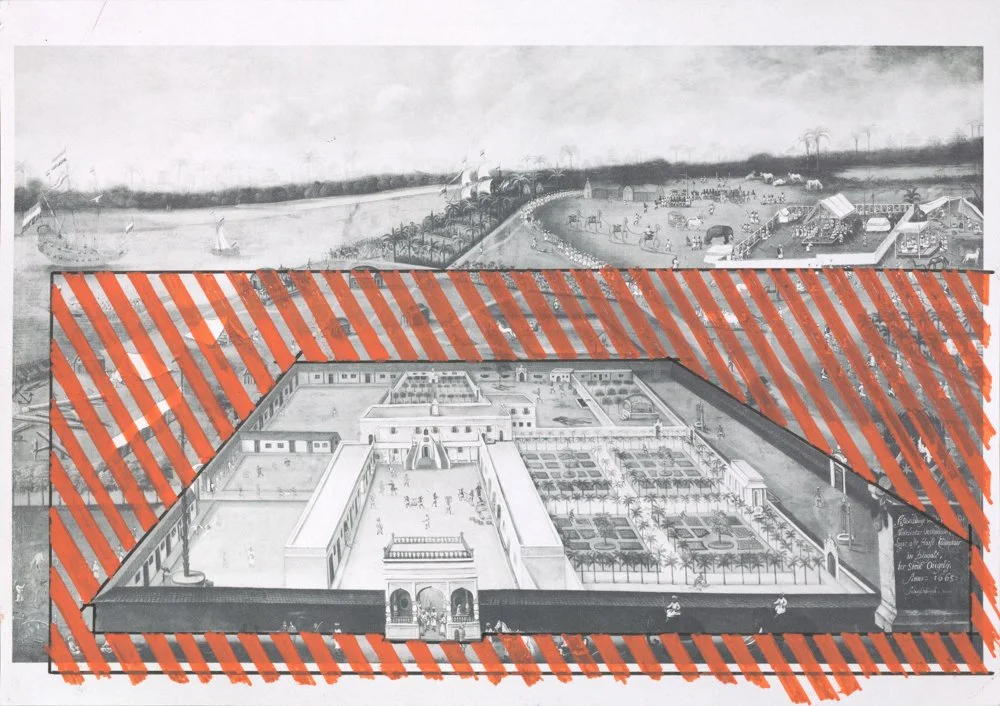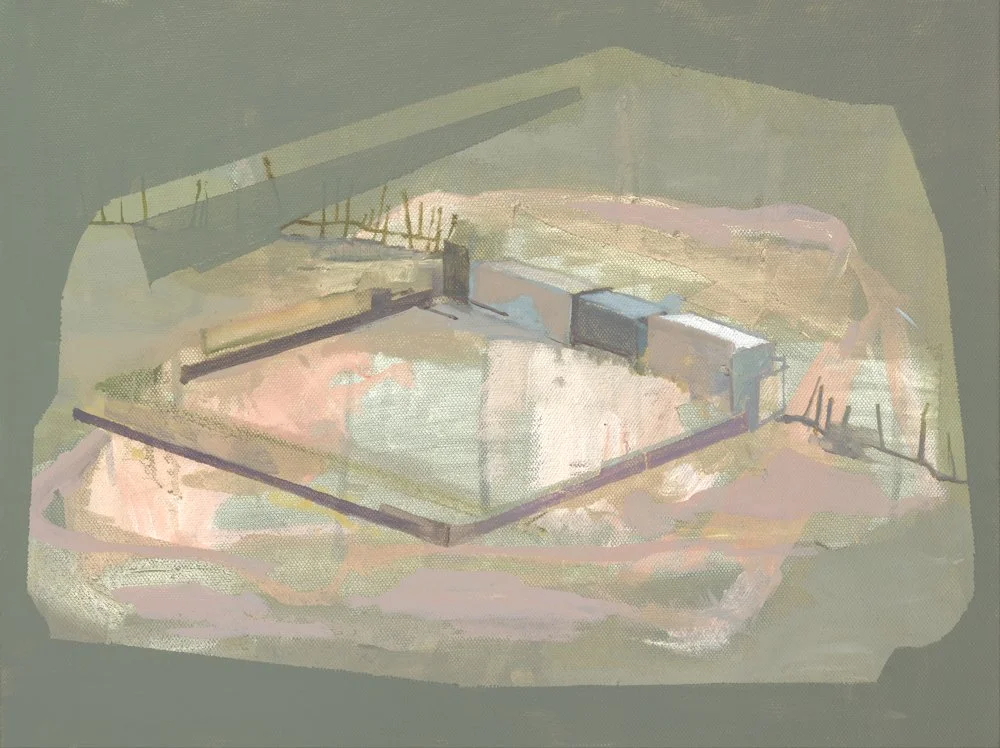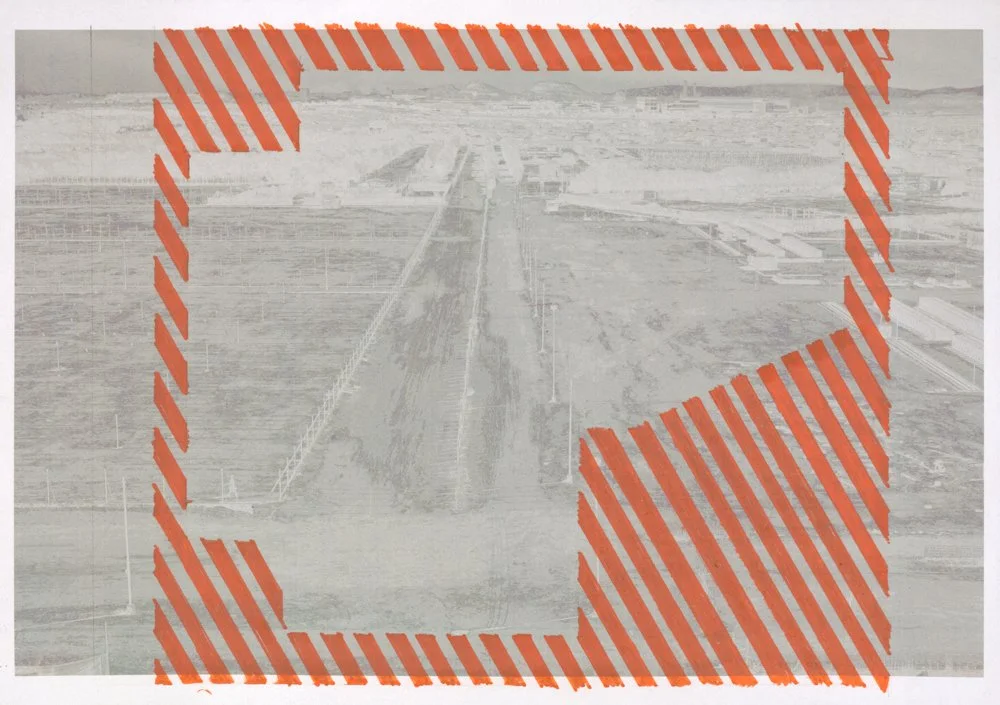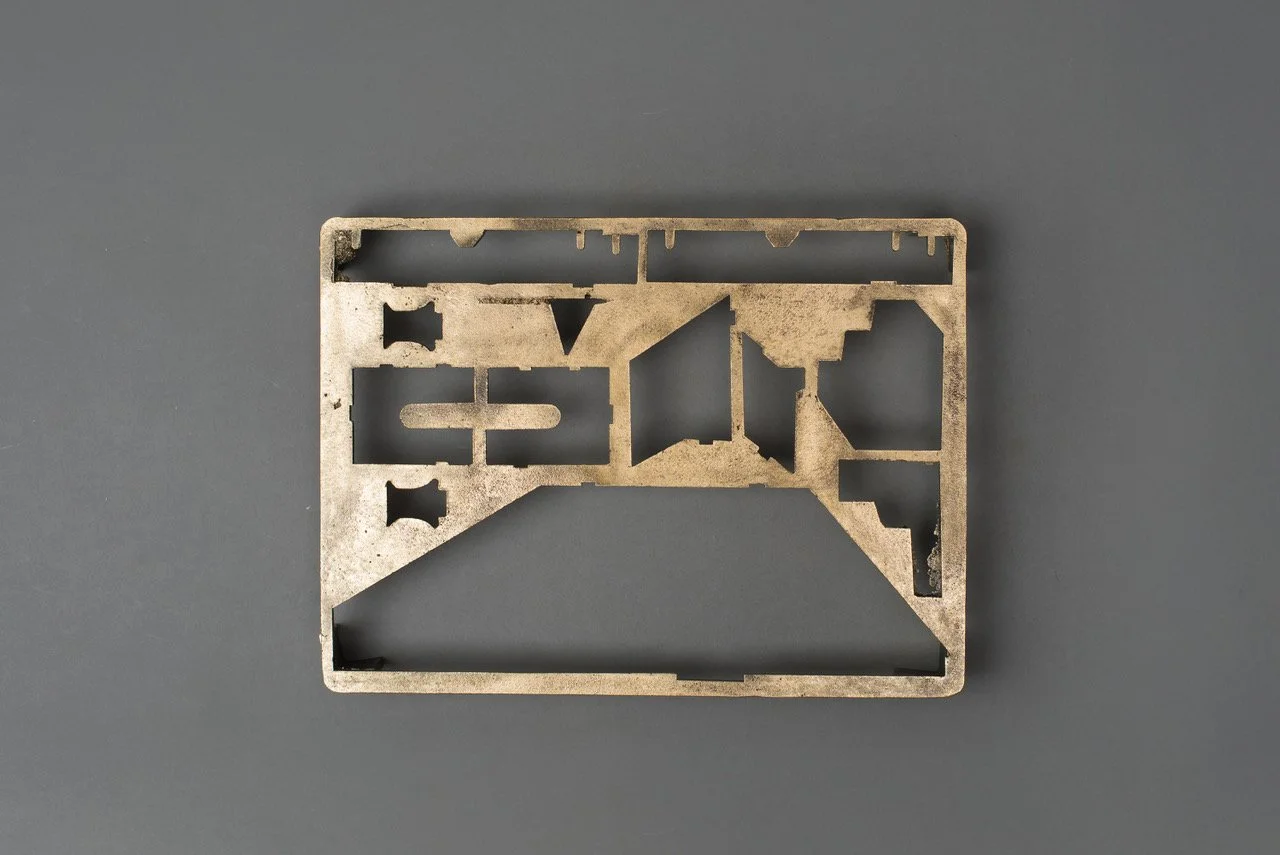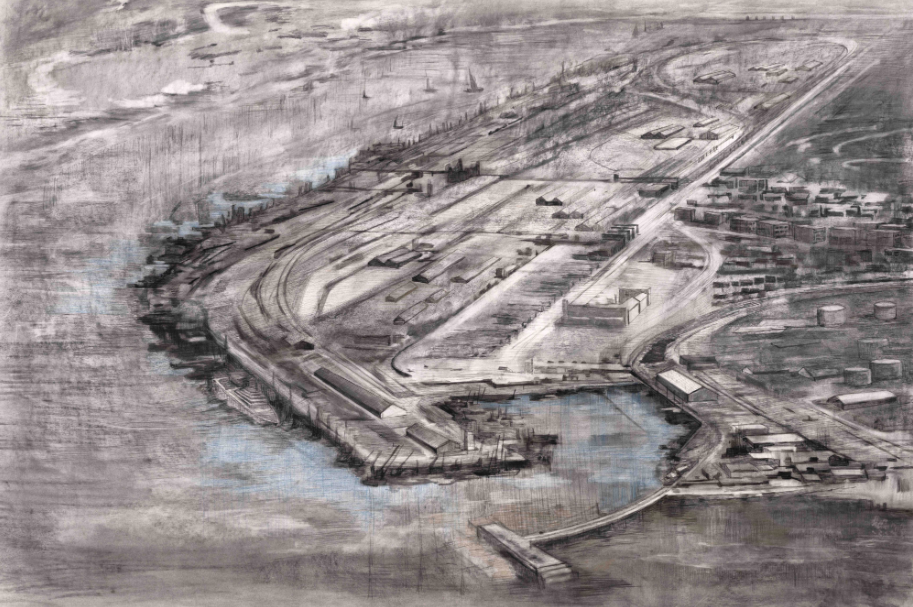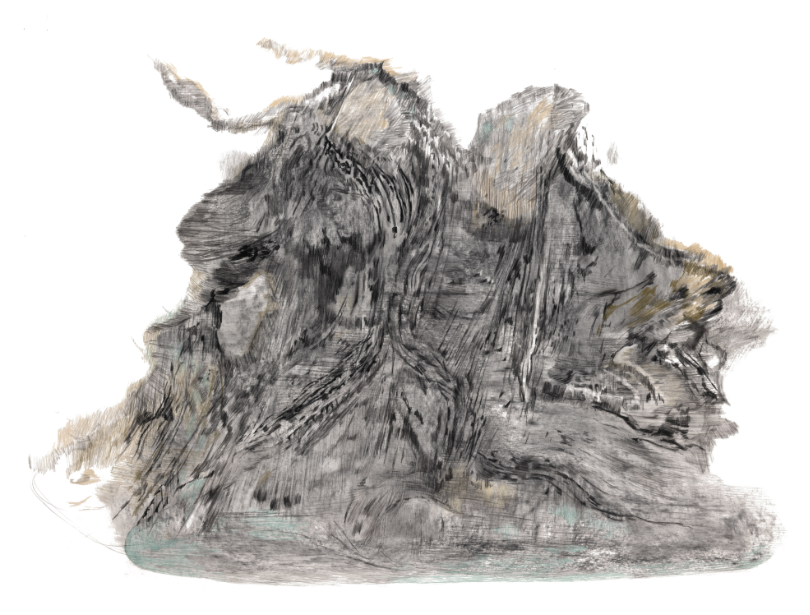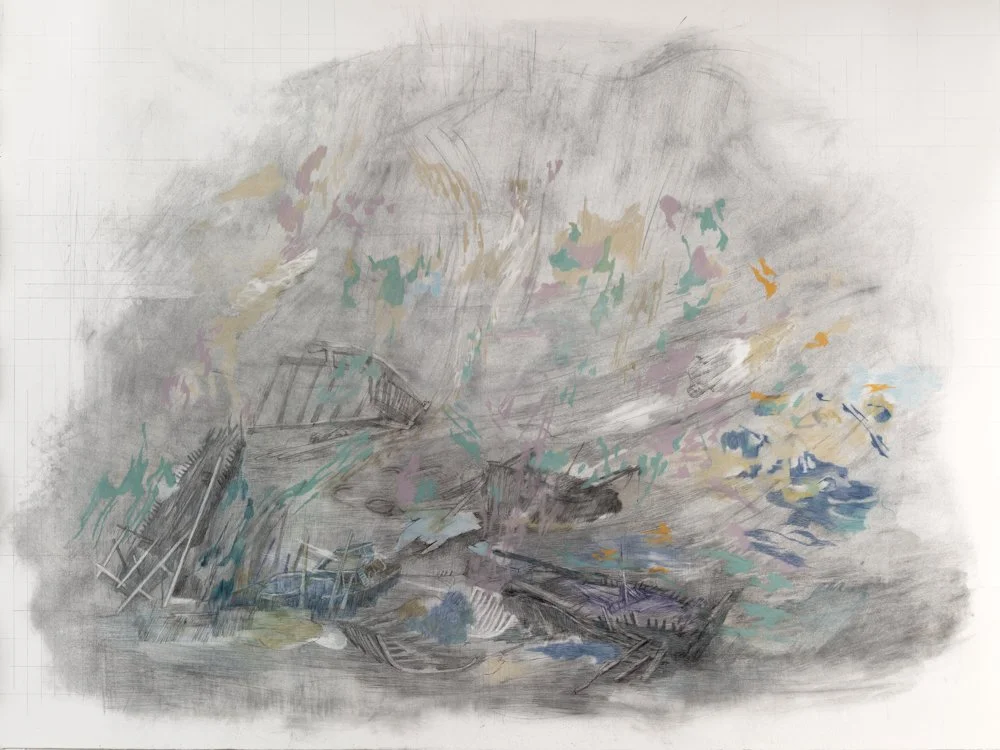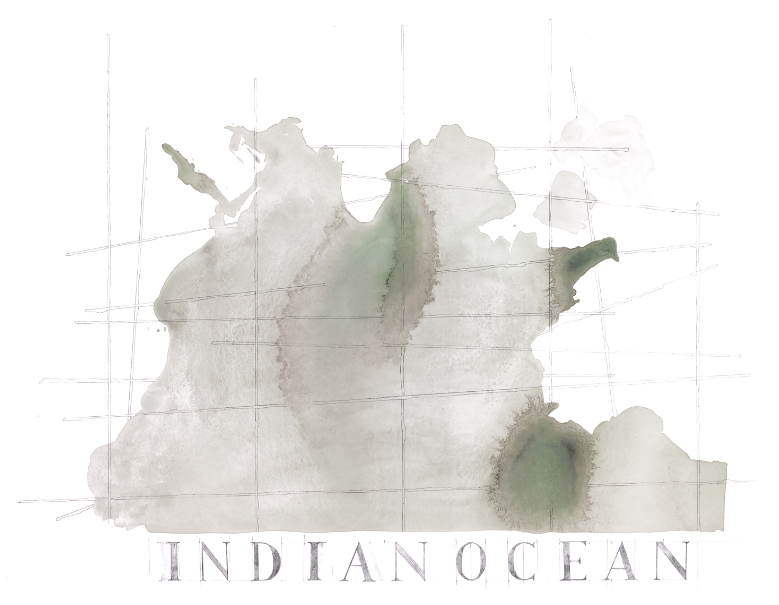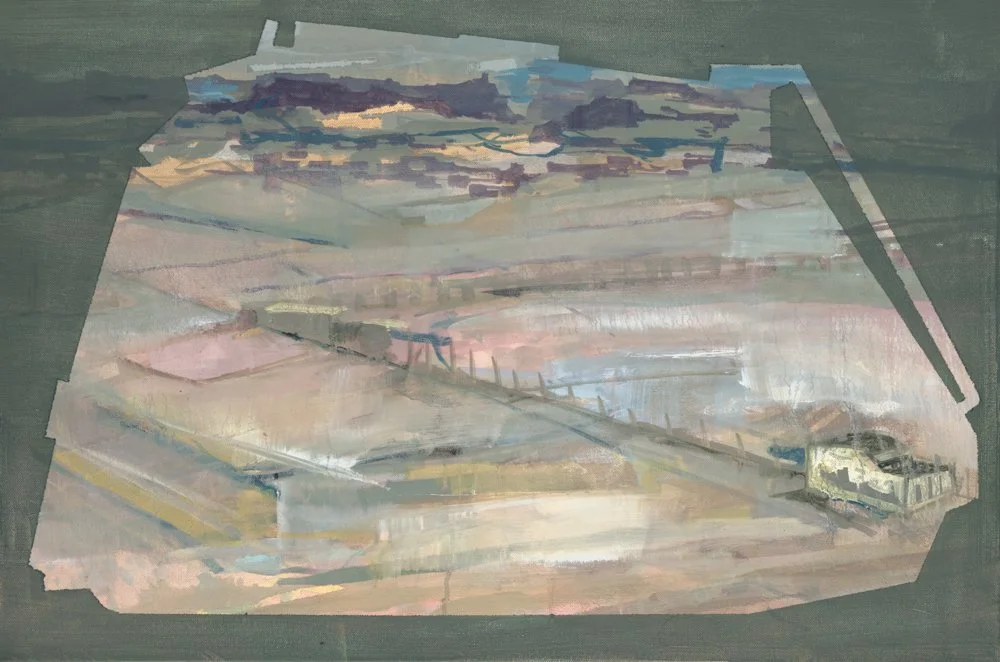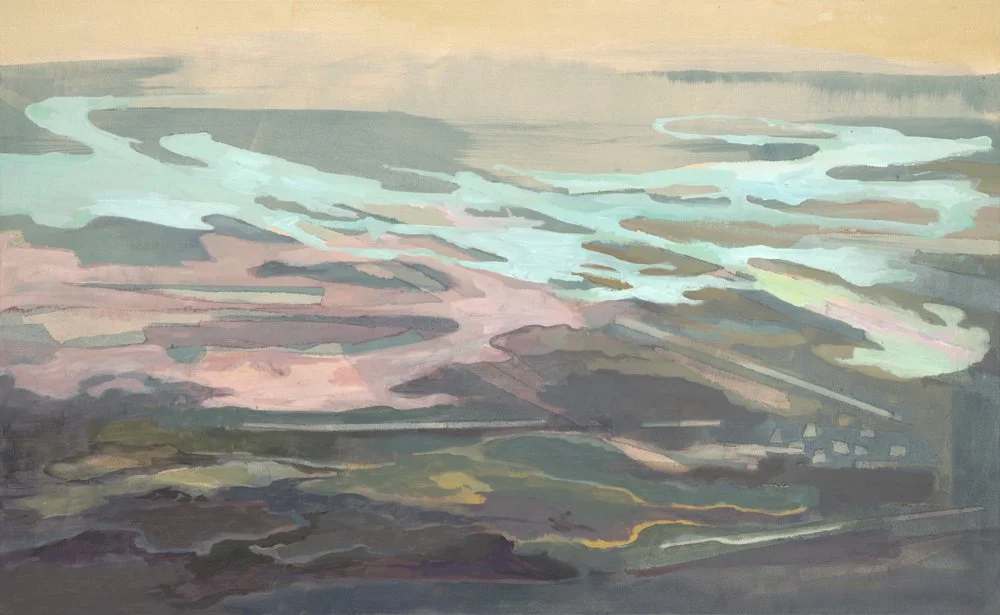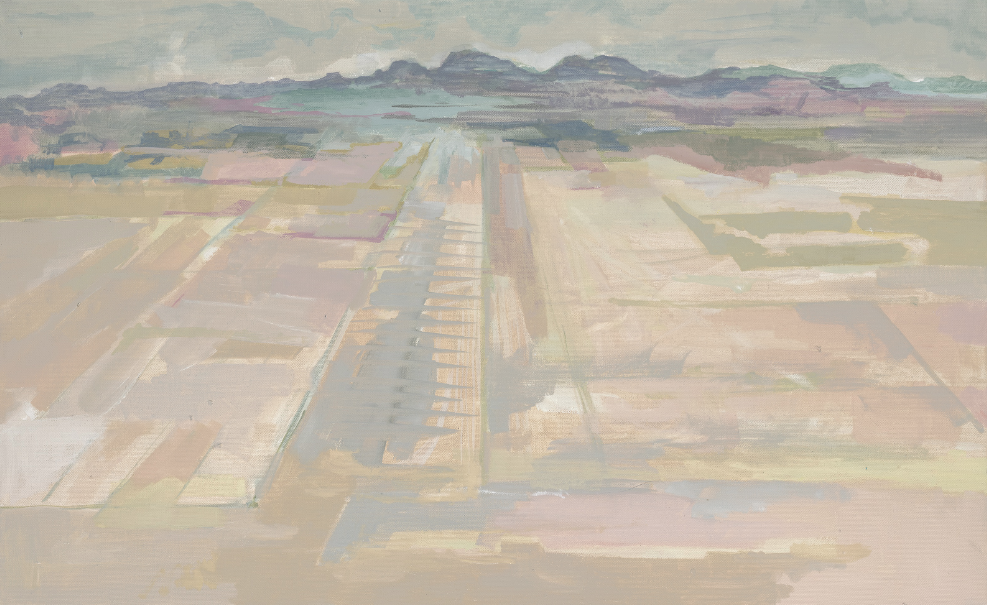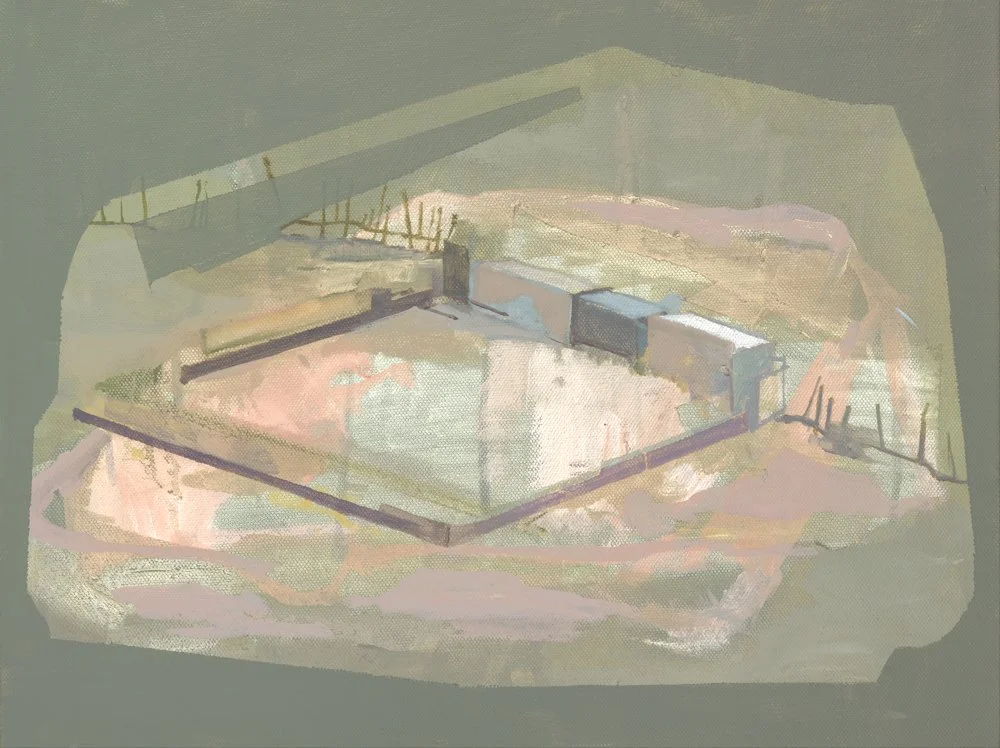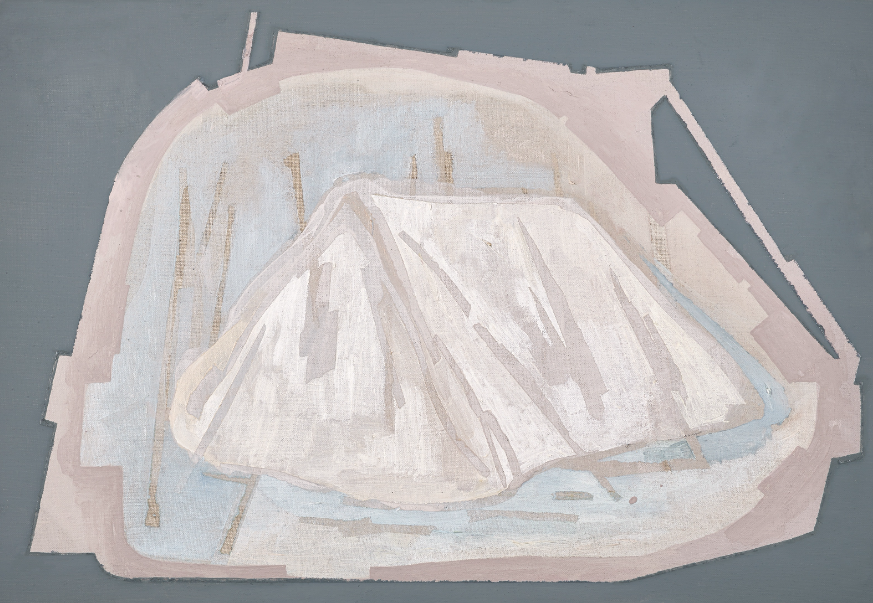Study to find a geometry. no.1, Mixed media, 21 x 30 cm, 2024 Study to find a geometry. no. 2, Mixed media, 21 x 30 cm, 2024UNRULY Edges
Naiza Khan: I first saw the VOC painting at the Rijksmuseum in Amsterdam 2013. It shows The Trading Post of the Dutch East India Company in Hooghly, Bengal [1665] by the Dutch artist Hendrik van Schuylenburgh. This is a large painting that documents an important moment in Dutch colonial history, and it hangs in the same gallery that exhibits broken porcelain from shipwrecks, which have also been a part of my work. I have been looking at this painting for some time, for it tells a story of activities within and around the fort. I wanted to unpack this image and let it speak of the current scenarios we are living through – the afterlife of empire and its legacy.
I am interested in how space is constructed in this painting to demarcate hierarchy. The natural world within this image has been readjusted, and there is a geometry [the fort] and an aesthetic which has been imposed on the landscape. I call it the ’geometry of Empire’ – it’s another form of cartography, a surveillance of the land. It illustrates how empire sees and speaks to its subjects. But, more importantly, in my view, it projects its self-image for posterity. My question, visually, was: How do I resist this artifice? How do I read this image and create a counterpoint?
Zoe Butt: What I feel you’re doing with your images is giving a different kind of data rendering. In some images, you choose to remove the masking fluid from the paper's surface, lifting this substance off of the image and consequently creating an absence, a kind of excavation, like an archaeologist seeking what lies beneath. In the land of digital data excavation, this is a highly specialist task. It looks very different to the cartographic maps of history. Digital data excavation is numbers and digits. Our visual relationship to history today is shifting; we render algorithms into images, as opposed to the task of cartography, which maps the human eye. I think both are as equally violent as the other, and I sense this un-comfortability in your oil paintings too, a desire to let the image be untethered. And so, therefore, you’re letting the medium dictate the shape of the map.
Catalogue entry, for UNRULY edges
Zoe Butt in conversation with Naiza Khan
Rossi Rossi, Hong Kong, 2024Unruly Edges I, Charcoal and conté on paper, 140 x 200 cm, 2023Unruly Edges II, Charcoal and conté on paper, 140 x 180 cm, 2023Ground Truth, Charcoal and conté on paper, 140 x 180 cm, 2024Ocean Scaffold, Watercolour and graphite on paper, 53 x 75 cm, 2023Land Hold II, Oil on canvas, 50 x 75 cm, 2024Deep Sea Coal, Oil on canvas, 50 x 80.5 cm, 2024View from Pahari, Oil on canvas, 50 x 80.5 cm, 2024Enclosure I, Oil on canvas, 25 x 35 cm, 2024Dwelling I, Oil on linen, 45 x 65 cm, 2017For the 14th Gwangju Biennale, Khan presented Unruly Edges, as a series of works that explore the entanglement of colonial history and hydro-infrastructures. The large format drawings and photographic images take inspiration from the expansion of Karachi port and the Indian Ocean and the changing shape of the shoreline. Together, the installation presents abstract and representational modes of thinking about bodies of water and infrastructure. The images are an assemblage of personal experience and historical archives.
14th Gwangju Biennale
Soft and weak like water
Artistic director: Sook-Kyung Lee
April - 9 July, 2023
Unruly Edges I & II, 2023
Installation ViewUnruly Edges no.1, Charcoal and conté on paper, 200 x 140 cm
Watercolour on paper 107 x 75 cm
Photograph 100 x 65 cm, 2023